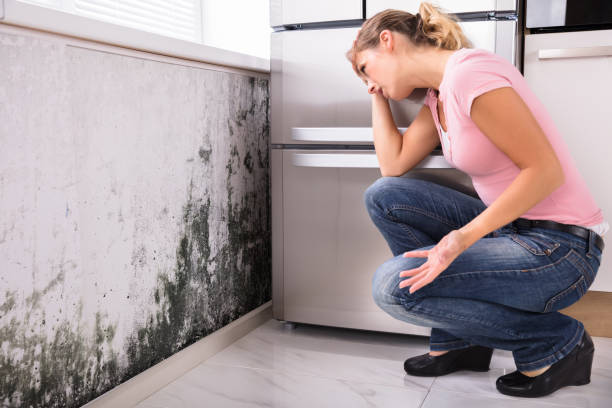Mould – Dangers and Guidelines
Hidden Dangers of Mould:
Mould can cause a variety of health problems, including respiratory issues, allergies, and infections. Prolonged exposure to mould can lead to more severe health problems, including asthma, bronchitis, and even lung damage. Mould also produces mycotoxins, which can be toxic and harmful to humans and animals.
In addition to health problems, mould can also cause significant structural damage to your property. Mould can weaken building materials such as wood and drywall, leading to rot and decay. This can compromise the structural integrity of your property and result in costly repairs.
The presence of mould can often be an indication of leaks or damp issues in a property. This is because mould thrives in moist environments and can grow on almost any surface that is wet for an extended period.
If you notice mould in your property, it’s essential to investigate the root cause of the problem. This may involve checking for leaks or water damage in walls, ceilings, and floors. It’s crucial to address these issues promptly to prevent further mould growth and structural damage.
It’s also worth noting that mould can sometimes be invisible to the naked eye, particularly in the early stages of growth. In these cases, a musty or damp smell may be the only indication that mould is present. If you suspect that mould may be present in your property, it’s important to seek professional assistance to identify and remove the mould effectively.
In summary, the presence of mould in a property can indicate underlying leaks or damp issues. It’s crucial to investigate the root cause of the problem and address it promptly to prevent further mould growth and damage to the property. Regular building and pest inspections can help identify and prevent mould growth, ensuring a safe and healthy living environment for tenants.
Facts about Mould:
- Mould can grow within 24-48 hours in damp conditions.
- Mould spores can be present in the air and can cause health problems when inhaled.
- Mould can be difficult to detect, as it often grows in hidden areas such as behind walls and under floors.
- Not all types of mould are toxic, but it’s still important to remove all mould to prevent health problems and structural damage.
Obligations to Tenants:
As a property owner or manager, you have an obligation to provide a safe and healthy living environment for your tenants. This includes identifying and mitigating mould problems. You should regularly inspect your property for mould, take appropriate action to remove mould, and educate your tenants on how to prevent mould growth.
Preventing Mould Growth:
- Mechanical Ventilation: Proper ventilation is essential to prevent mould growth in areas with high moisture levels, such as subfloors and bathrooms. Installing mechanical ventilation systems such as exhaust fans or vents can help reduce humidity levels and prevent mould growth.
- Dehumidifiers: Dehumidifiers are an effective way to reduce moisture levels in the air and prevent mould growth. They work by extracting moisture from the air and collecting it in a reservoir. It’s important to empty the reservoir regularly and clean the unit to prevent mould growth inside the dehumidifier.
- Sunlight: Sunlight is a natural disinfectant and can help prevent mould growth. It’s essential to open curtains and blinds during the day to allow sunlight into the room, particularly in areas prone to moisture and mould growth.
Common Treatments for Mould
There are many other effective products for killing and removing light mould infestations from walls, floors and
other hard surfaces. Consider using the following cleaning solutions such as:
– a solution of three parts cleaning vinegar (not household) and two parts water
– a solution of 70% methylated spirits and 30% water
– a solution of clove oil and water (1.25 mL (¼ tsp) of oil of cloves to 1 litre of water. Contact time – overnight.
– a solution of tea tree oil and water (5ml:500ml water).
*Note: always spot test on an obscure corner before cleaning the entire surface.
Mould is a hidden danger that can cause significant health problems and structural damage to your property. Regular building and pest inspections can help identify and mitigate mould problems, ensuring that your property is safe and healthy for your tenants. As a property owner or manager, it’s essential to understand your obligations to your tenants and take appropriate action to prevent mould growth. Book a Building and Pest Inspection with Premier Building & Pest Reports to ensure the safety of your occupants and home.

